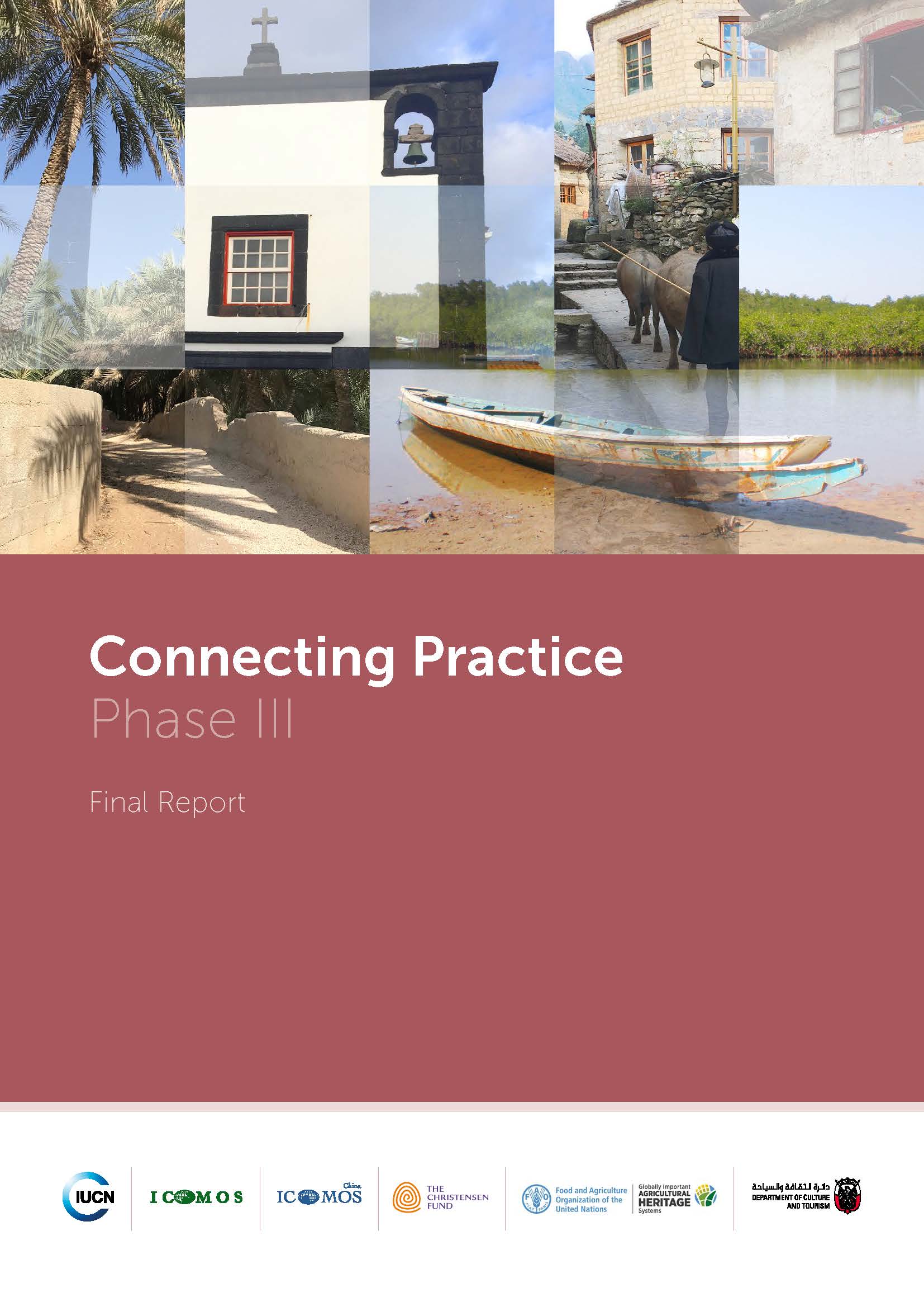Culture & Nature | Connecting Practice - Phase III: Final Report available
 Following the successful work done in the first two phases of Connecting Practice, ICOMOS and IUCN are pleased to share the results of the third Phase of the Connecting Practice project.
Following the successful work done in the first two phases of Connecting Practice, ICOMOS and IUCN are pleased to share the results of the third Phase of the Connecting Practice project.
Connecting Practice is a joint exploration by ICOMOS and IUCN aimed at learning and developing new approaches that recognise and harness the interconnection of natural and cultural values of highly significant heritage landscapes and seascapes to achieve a more effective, creative and inclusive way to maintain them and to learn from their long-lasting lessons.
Since the project began in 2013, three phases have been implemented and an additional phase is already foreseen. Each phase has contributed to increasing the awareness among heritage management actors about the close interrelations of the natural and cultural dimensions of heritage places and of the need for joint approaches in their protection and management.
Multi-disciplinary fieldwork, resulting in collective experiential learning, has always been an integral part of the Connecting Practice working method. Where deemed useful, the project has also included other activities, such as during Phase III, when fieldwork was complemented by the analysis of the meaning of words and concepts relevant for Connecting Practice, which has resulted in a Commentary on Nature–Culture Keywords, and by a survey among site managers based on a structured questionnaire, to reach out to a larger number of sites and their staff and to gather information about the nature–culture connections at their sites.
The relevance of the findings of Connecting Practice goes beyond the World Heritage system, and they can be used also to pursue the integration of nature–culture management practices at heritage places with multiple designations.
Throughout its three phases of implementation, Connecting Practice has confirmed that its uniqueness lies in being a think–tank, an innovation platform for developing and testing new ideas; its outcomes form an experimental basis that can be further developed and operationalised through other projects and platforms within the World Heritage system and beyond.
Since 2013, the Connecting Practice community has grown, with more and more professionals and site managers who share the vision and the ambitions of the project becoming involved in its activities. Reaching out to other organisations and research centres, such as the Food and Agricultural Organisation (FAO) and the Stockholm Resilience Centre, has greatly contributed to the multi-disciplinary nature of the project.
This report presents the activities carried out, the results obtained, the lessons learned and the challenges encountered in the implementation of this phase of the project. The third phase has also offered the opportunity to reflect on the three phases of the project as a whole and its achievements, to clarify its position among other initiatives, platforms or projects and to outline perspectives and actions for the future.
________________________________________________________________________________
ICOMOS and IUCN are grateful for the Christensen Fund’s continuing support since the beginning of the project in 2013. We are also thankful to the Abu Dhabi Department for Culture and Tourism, ICOMOS China, the Swiss Federal Office for the Environment (FOEN), the FAO – Globally Important Agricultural Heritage System (GIAHS) Programme Secretariat, the Stockholm Resilience Centre, Albaeco and Leuphana Universität Lüneburg for providing additional financial and technical support to the project. Many thanks go also to the site managers and stakeholders in the United Arab Emirates, Senegal, Portugal and China for their support and involvement in the fieldwork and to all site managers and professionals that have generously provided their time and expertise throughout the implementation of this third phase of the project.
![]() Download the Connecting Practice - Phase III: Final Report
Download the Connecting Practice - Phase III: Final Report
See also:
![]() Read the report for the Connecting Practice - Phase I
Read the report for the Connecting Practice - Phase I
